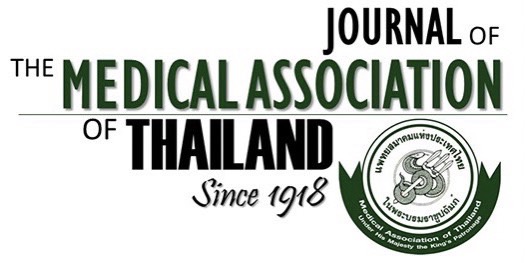Incidence of and Risk Factors for Stroke and Cerebral Microembolism after Transcatheter Aortic Valve Replacement: Insights from Diffusion-Weighted Magnetic Resonance Imaging of the Brain
Wongsakorn Luangphiphat¹,², Kamol Udol³, Tanyarat Aramsareewong², Anuruck Jeamanukoolkit², Piyanart Preeyanont², Worawut Tassanawiwat², Damrong Sukitpunyaroj², Viroj Muangsillapasart², Norachai Sirisreetreerux², Chatree Wongsinkongman², Chanawee Hirunpattarasilp¹, Komen Senngam², Arthita Choolam⁴, Numfon Tweeatsani⁵
Affiliation : ¹ Princess Srisavangavadhana Faculty of Medicine, Chulabhorn Royal Academy, Bangkok, Thailand; ² Division of Cardiology, Department of Medicine, Chulabhorn Hospital, Chulabhorn Royal Academy, Bangkok, Thailand; ³ Division of Cardiovascular and Metabolic Disease Prevention, Department of Preventive and Social Medicine, Faculty of Medicine Siriraj Hospital, Mahidol University, Bangkok, Thailand; ⁴ Department of Medicine, Chulabhorn Hospital, Chulabhorn Royal Academy, Bangkok, Thailand; ⁵ Faculty of Health Science Technology, HRH Princess Chulabhorn College of Medical Science, Chulabhorn Royal Academy, Bangkok, Thailand
Background: Transcatheter aortic valve replacement (TAVR) is an established treatment for severe symptomatic aortic stenosis, but it carries a risk of cerebrovascular events, including clinical ischemic stroke, transient ischemic attack (TIA), and silent cerebral ischemic lesions (SCILs). The detection of these lesions using advanced imaging modalities, such as diffusion-weighted magnetic resonance imaging (DW-MRI) of the brain, provides valuable insights into procedural and patient-related factors contributing to their occurrence.
Objective: To evaluate the incidence of and risk factors for stroke, TIA, and SCILs in patients undergoing TAVR.
Materials and Methods: A prospective cohort study was conducted on patients with severe symptomatic aortic stenosis undergoing TAVR at a single center. Cerebral ischemia was assessed using DW-MRI of the brain within seven to fourteen days and three to six months post-procedure. Baseline demographics, procedural details, and outcomes were analyzed to identify predictors of SCILs and stroke.
Results: Of the 48 patients included, SCILs were detected in 91.67% using DW-MRI of the brain, with a mean lesion size of 4.01±2.58 mm. Transient clinical stroke occurred in one patient (2.08%), while a permanent clinical stroke was reported in two patients (4.17%). Lesions predominantly involved the middle cerebral artery territories at 50.81%, consistent with embolic events. Multivariate analysis identified valve dislodgement as a significant predictor of SCILs (p<0.001). Procedural factors such as rapid ventricular pacing and post-dilatation were not associated with SCILs.
Conclusion: The present study highlights a high incidence of SCILs following TAVR, driven by procedural and patient-specific factors. Further research is needed to assess the long-term clinical implications of SCILs.
Received 3 March 2025 | Revised 22 April 2025 | Accepted 29 April 2025
DOI: 10.35755/jmedassocthai.2025.5.420-430-02878
Keywords : Transcatheter aortic valve replacement; TAVR; Silent cerebral ischemic lesions; Stroke; DW-MRI of the brain; Aortic stenosis
All Articles
Download



